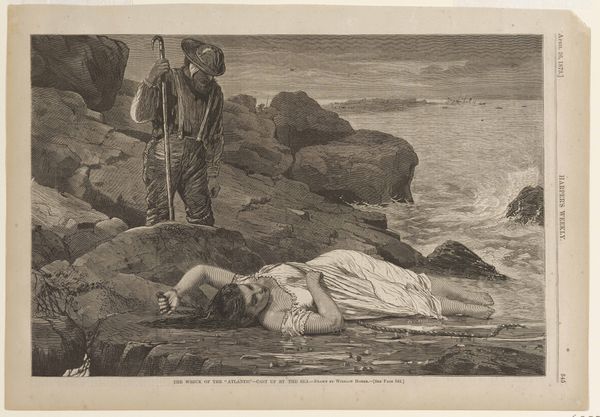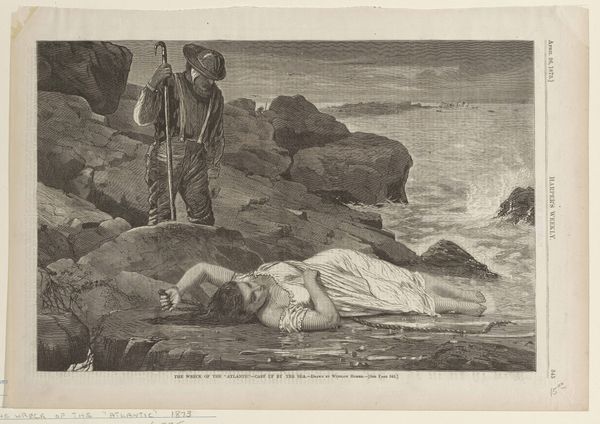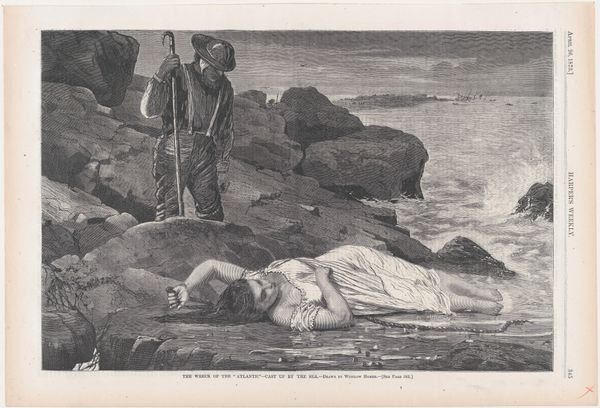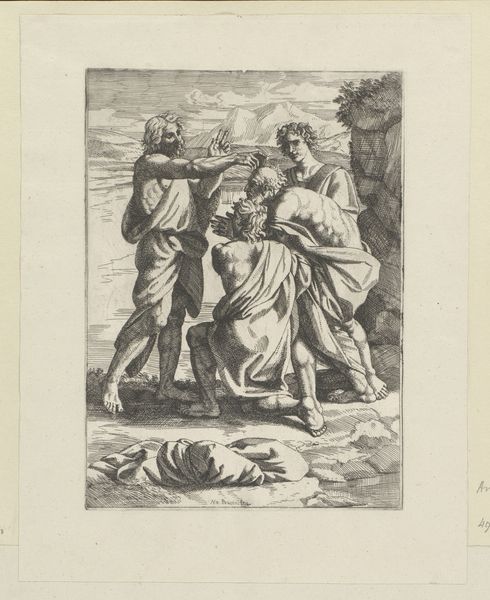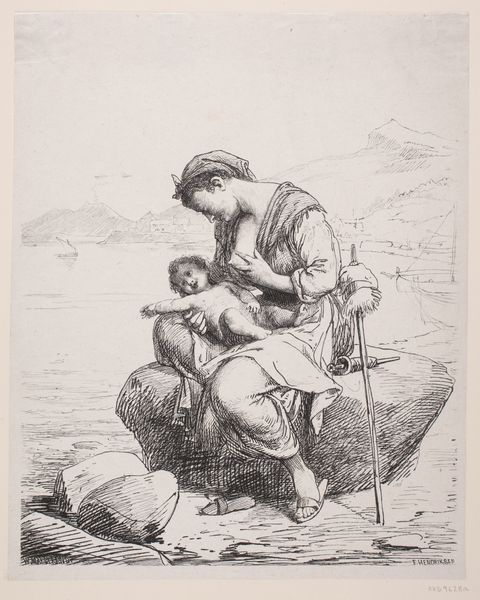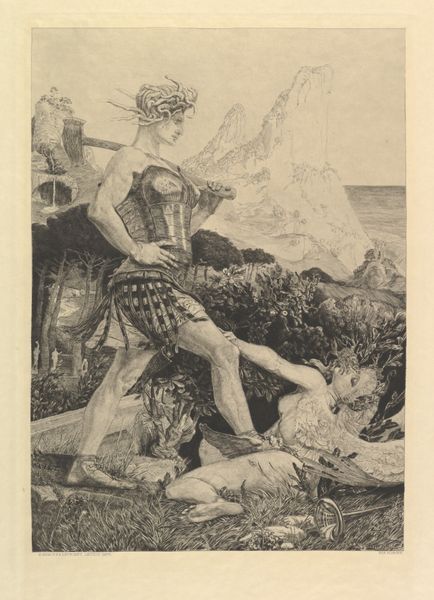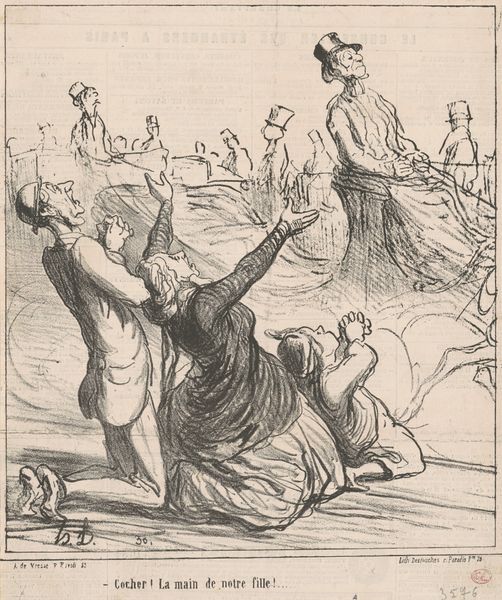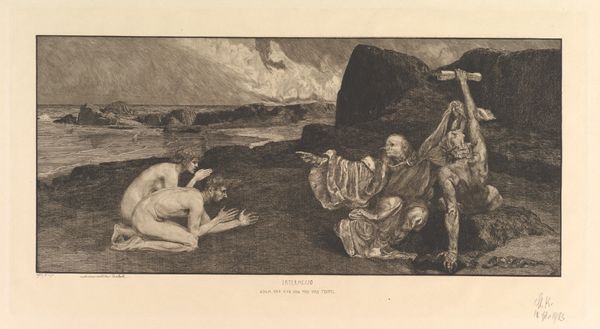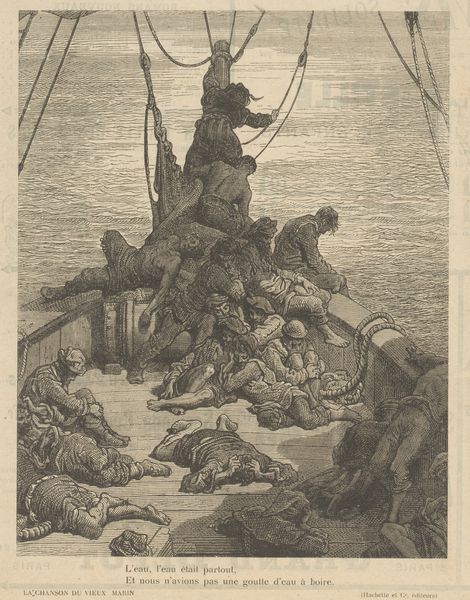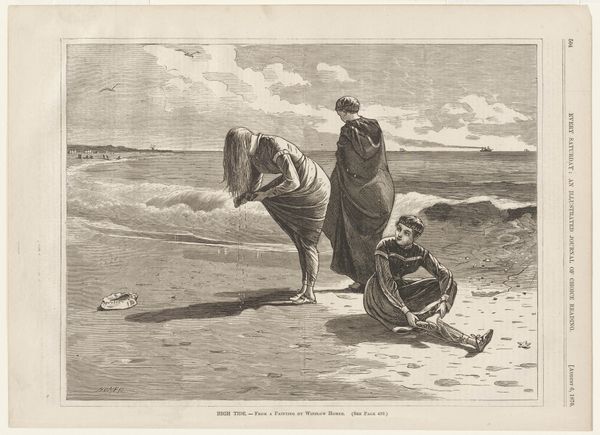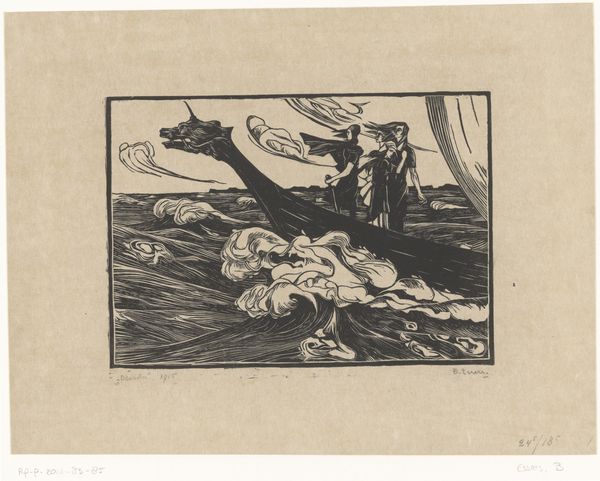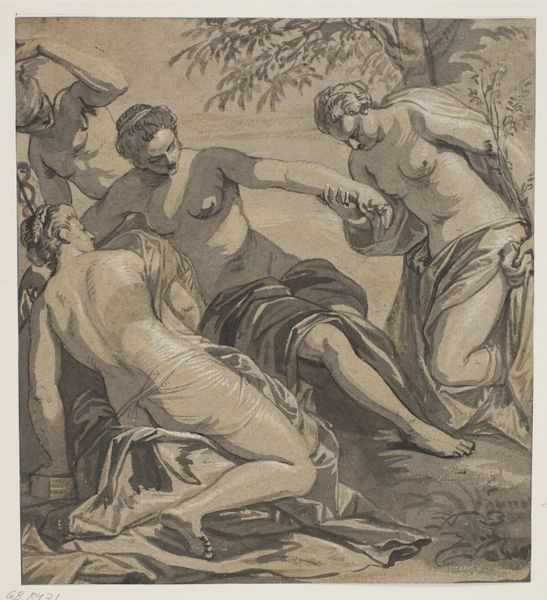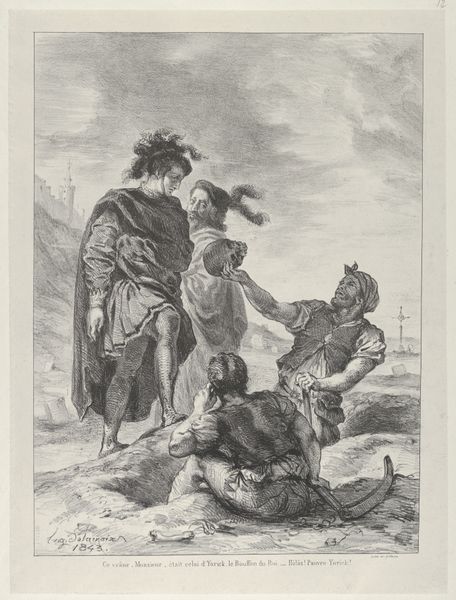
drawing, watercolor
#
drawing
#
pencil sketch
#
landscape
#
figuration
#
watercolor
#
romanticism
#
sketchbook drawing
#
pencil work
#
watercolour illustration
Dimensions: 225 mm (height) x 161 mm (width) (bladmaal)
Curator: This watercolour drawing from 1828 by Martinus Rørbye is titled, "Two Warriors Find a Man Washed Ashore." It currently resides in the collection of the SMK, the National Gallery of Denmark. What do you think when you look at this? Editor: Well, I find the scene rather melancholy, though intriguing. There’s a feeling of stark loneliness on that beach, and the figures seem to be suspended between worlds, the earthy solidity of the coast against the ethereal expanse of the sea and sky. The monochromatic palette amplifies that feeling of melancholy, I think. Curator: I find it interesting how Rørbye employs primarily drawing techniques; pencil and watercolour to give form and texture to this narrative scene. We should consider how this speaks to Romanticism, a period where there was renewed interest in classical history and literary accounts. Editor: True, and consider the physicality, though. Rørbye had to find or create the pigments. This process is tangible in the work, and yet so very little information exists around that. Think of the hands involved, from mining the earth for materials to their transformation into the object we see now. It's not just art; it’s a chronicle of human labor, both the labour on view and the artist's labor we don't get to see. Curator: Indeed, the material processes underline the conditions under which art like this came to be. And those choices - to emphasize draughtsmanship as much as painting. Perhaps even reflecting economic restrictions that influenced material choices available to artists during this period. Editor: Yes! Also consider, if you will, how the scale lends itself to intimacy; the drawing asks us to come close, to share in the discovery and consider our own vulnerabilities through it, like stumbling upon an unstage scene, unexpected and vulnerable. Almost as vulnerable as Rørbye with pencil and brush trying to earn a living! Curator: Looking closer then, what might begin as the story of classical heroes shifts to become a poignant exploration of individual human struggles within wider material constraints of production during a burgeoning industrial age. Editor: It feels apt, then, that we conclude here, perched on the beach ourselves, considering both the wash of waves and of history itself. Curator: A powerful reminder of art's enduring conversation with craft, culture, and circumstance.
Comments
No comments
Be the first to comment and join the conversation on the ultimate creative platform.
